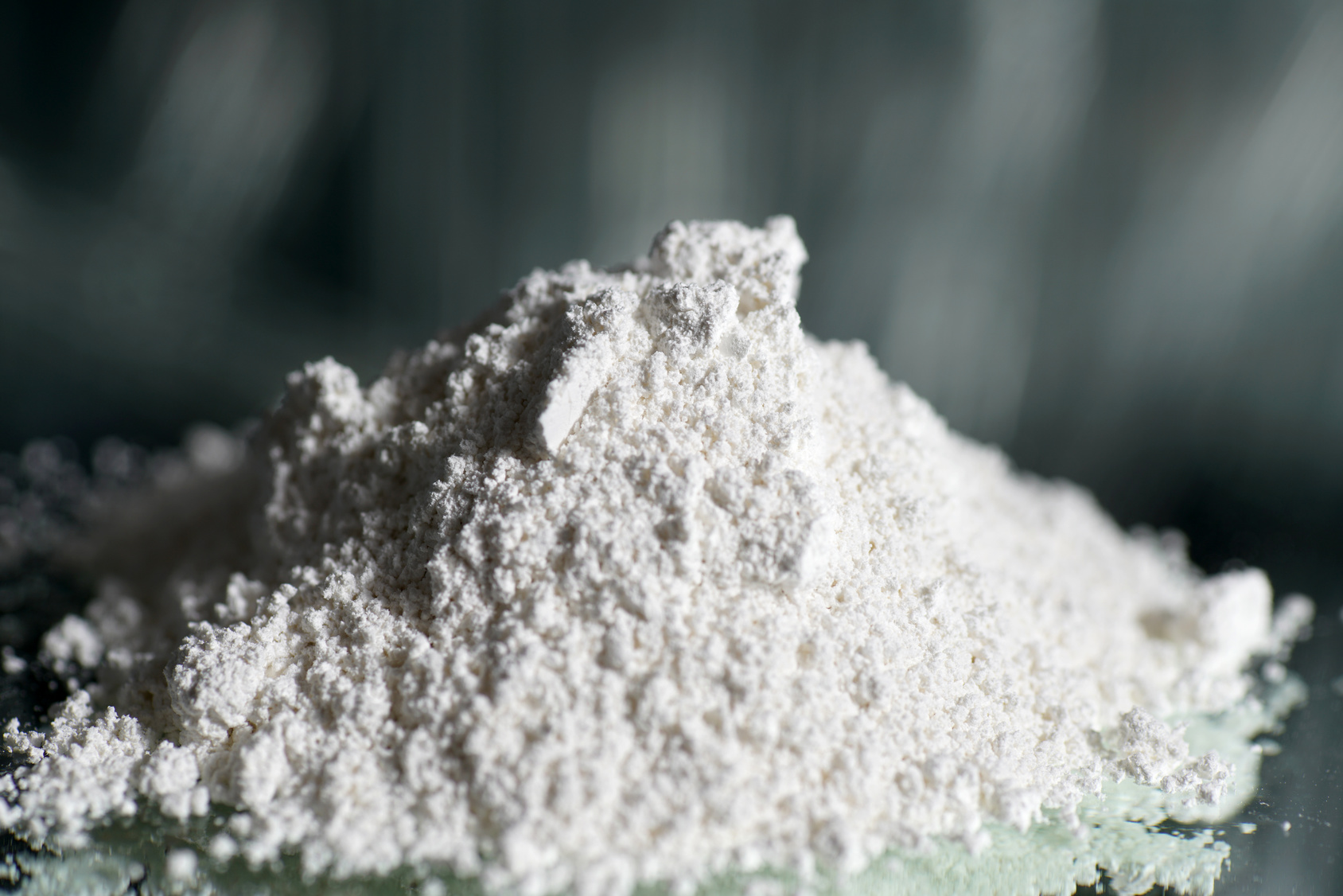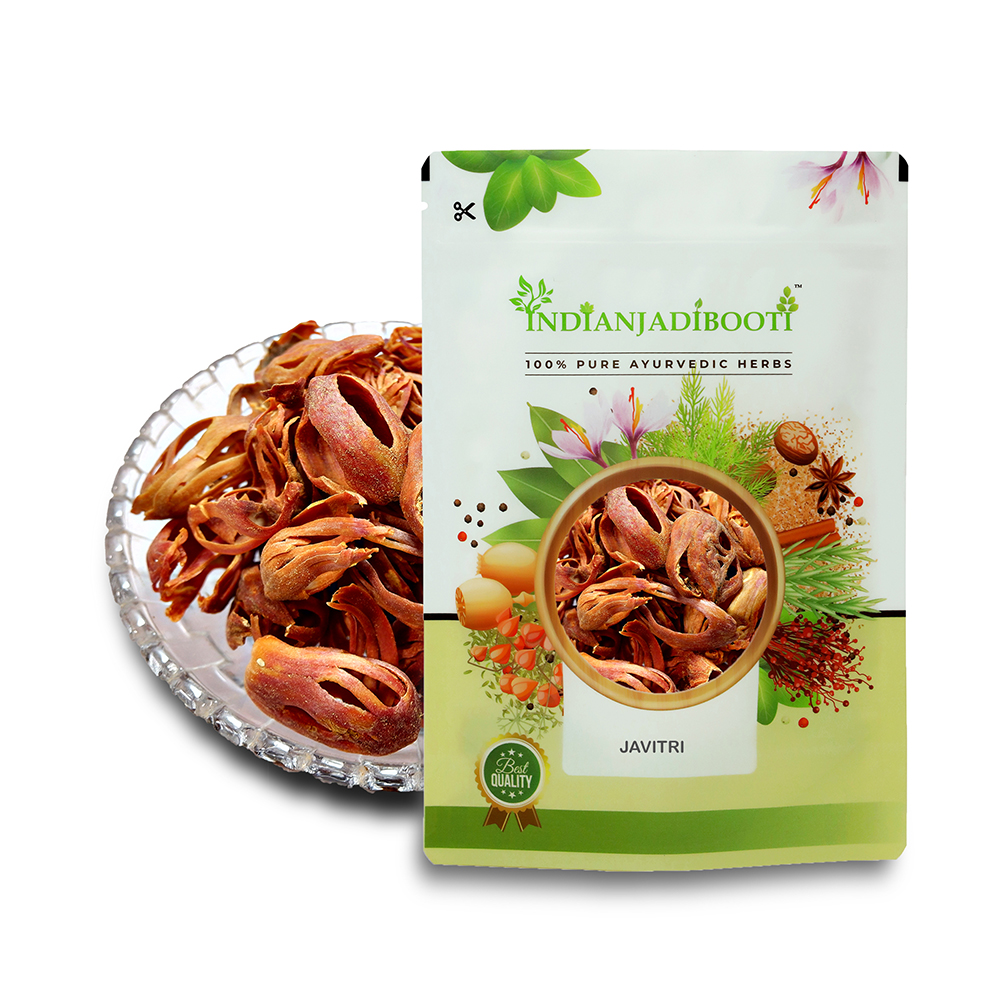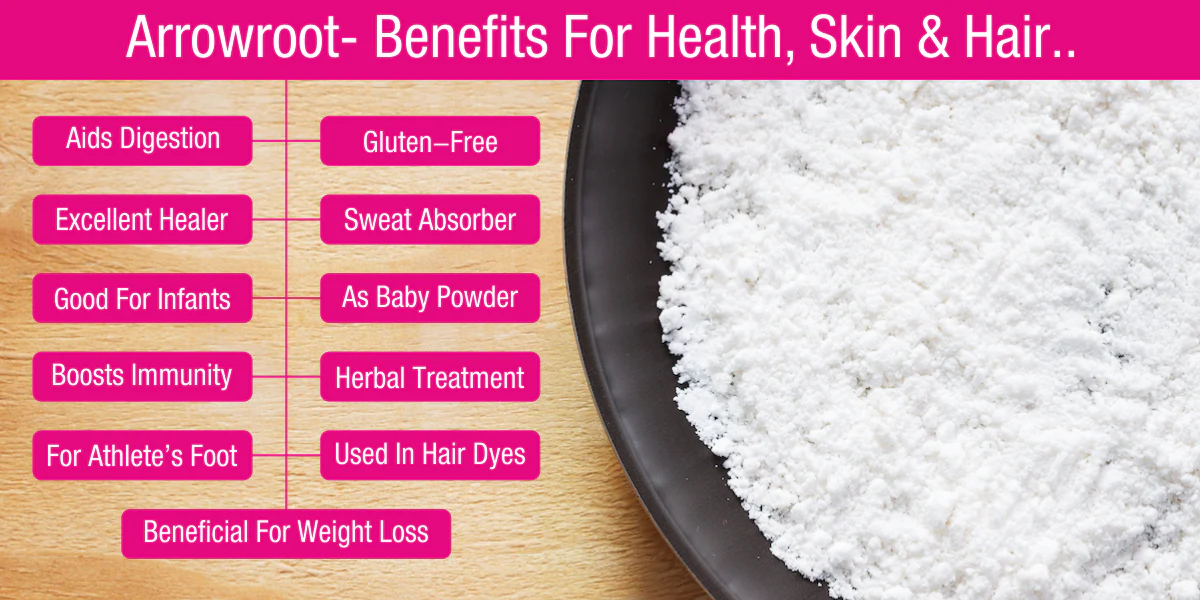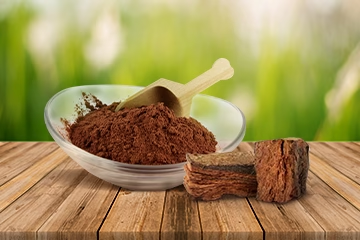Katha Powder, also known as Catechu or Cutch, is a traditional Ayurvedic ingredient derived from the Acacia catechu tree, commonly found in India and Southeast Asia. This powerful herbal powder has been used for centuries in Ayurveda, Unani medicine, and various folk remedies for its therapeutic, medicinal, and cosmetic properties.
In India, Katha is best known for its role in Paan (betel leaf preparation), where it provides a distinctive flavor, color, and astringent taste. But beyond culinary use, Katha is a hidden gem in herbal medicine—offering benefits for oral health, digestion, skin, hair, and wound healing.
Let’s dive deep into everything you need to know about Katha Powder—its history, preparation, uses, health benefits, side effects, and modern applications.
Table of Contents
What is Katha Powder?
Katha Powder is a natural extract obtained from the heartwood of the Acacia catechu tree. The tree’s wood is boiled, and the extract is filtered, dried, and ground into a fine powder. The end product is brownish in color and has a slightly bitter and astringent taste.
The two main varieties of Katha are:
Katha (Catechu): The pure extract used for medicinal, cosmetic, and culinary purposes.
Cutch: A less pure form often used in dyeing leather, wool, and textiles.
Botanical Profile
Scientific Name: Acacia catechu
Family: Fabaceae
Common Names: Catechu, Khair, Katha, Cutch, Black Catechu
Plant Part Used: Heartwood and bark
Taste (Rasa in Ayurveda): Kashaya (Astringent)
Energy (Virya): Cooling
Post-digestive Effect (Vipaka): Katu (Pungent)
Historical and Cultural Significance
Katha has been used in India for more than 2000 years. Ancient Ayurvedic texts such as Charaka Samhita and Sushruta Samhita mention Katha as a powerful astringent and healing agent.
It has cultural importance too—used in ritual offerings, traditional medicine, and betel chewing rituals. In rural areas, Katha is a household remedy for sore throats, cough, and skin irritation.
How Katha Powder is Made
The process of making Katha Powder is traditional yet scientific. Here’s how it’s prepared:
Wood Collection: Mature heartwood of the Acacia catechu tree is collected.
Boiling: The wood is cut into small pieces and boiled in large containers filled with water.
Extraction: The water absorbs the beneficial compounds (catechins, tannins, etc.).
Filtration: The liquid extract is filtered to remove wood particles.
Cooling and Drying: The extract is cooled and allowed to crystallize.
Grinding: The hardened material is ground into a fine, smooth powder—Katha Powder.
This traditional method ensures that Katha retains its natural potency and color.
Chemical Composition of Katha
Katha is rich in tannins, catechins, and flavonoids—all of which contribute to its healing and antioxidant properties.
Key constituents include:
Catechin
Epicatechin
Tannic acid
Quercetin
Phlobaphenes
Gum and resin compounds
These components make Katha a potent antioxidant, antimicrobial, and astringent substance.
Health Benefits of Katha Powder
1. Promotes Oral Health
Katha is a traditional remedy for toothache, gum disease, and bad breath. It is a key ingredient in herbal tooth powders and mouth rinses.
Strengthens gums and teeth
Prevents plaque formation
Treats bleeding gums and mouth ulcers
Freshens breath naturally
How to Use:
Mix Katha Powder with clove oil or neem powder for an effective herbal toothpaste.
2. Improves Digestive Health
Katha’s astringent properties help in treating diarrhea, dysentery, and indigestion. It tightens intestinal tissues, reduces inflammation, and improves gut balance.
Ayurvedic Use:
A pinch of Katha mixed with honey or jaggery water can soothe digestive issues.
3. Heals Wounds and Skin Infections
Due to its antibacterial and anti-inflammatory nature, Katha helps in healing wounds, cuts, and insect bites. It also soothes skin irritation, acne, and rashes.
Application:
Mix Katha Powder with rose water or aloe vera gel and apply to affected areas.
4. Supports Hair Health
Katha is often added to natural hair dyes and henna. It enhances hair color, strengthens roots, and prevents dandruff.
Benefits for Hair:
Adds a rich brown tint when mixed with henna
Prevents premature graying
Improves scalp health
Reduces itchiness and dandruff
Hair Mask Recipe:
Mix Katha Powder with henna, amla, and curd. Apply for 1 hour before rinsing.
5. Acts as a Natural Dye
Katha is used in textile industries as a natural brown dye for cotton, wool, and silk. It is eco-friendly and safe compared to synthetic dyes.
6. Treats Throat Infections
Katha water gargles are a popular Ayurvedic remedy for sore throat, tonsillitis, and cough.
How to Use:
Add ½ teaspoon of Katha Powder to warm water, gargle twice daily for relief.
7. Anti-aging Properties
Rich in antioxidants, Katha helps neutralize free radicals, delaying signs of aging, wrinkles, and sagging skin. It promotes natural collagen synthesis and maintains elasticity.
8. Controls Excessive Sweating and Odor
Due to its astringent nature, Katha helps reduce sweating and body odor. It can be used in herbal deodorants and foot soaks.
Ayurvedic Perspective on Katha
In Ayurveda, Katha is classified as Kashaya Rasa (Astringent) and Sheet Virya (Cooling). It is believed to balance Pitta and Kapha doshas while aggravating Vata if used in excess.
Ayurvedic Properties:
Rasa (Taste): Kashaya (Astringent)
Guna (Qualities): Laghu (Light), Ruksha (Dry)
Virya (Energy): Sheet (Cooling)
Vipaka (Post-Digestive Effect): Katu (Pungent)
Katha is often used in Ayurvedic formulations such as:
Khadirarishta (for skin diseases)
Khadira Churna (for detoxification)
Khadira Vati (for oral health)
Modern Uses of Katha Powder
Katha is used in:
Herbal Tooth Powders and Mouthwash
Natural Hair Dyes and Henna Mixtures
Herbal Cosmetics and Face Masks
Tanning and Leather Industry
Ayurvedic Medicine Formulations
Food Additives (in Betel Preparations)
Dosage and How to Use Katha Powder
| Purpose | Dosage / Usage |
|---|---|
| Oral Health | 1–2 g daily (mixed with toothpaste or water) |
| Digestive Aid | ¼ tsp with honey after meals |
| Hair Care | Mix 2–3 tbsp with henna for hair packs |
| Wound Healing | Apply paste externally |
| Gargle | ½ tsp in warm water twice daily |
Note: Always consult an Ayurvedic physician before starting regular use.
Possible Side Effects of Katha Powder
Although natural, excessive use of Katha can cause certain side effects:
Constipation due to strong astringency
Dryness of mouth when used in high amounts
Vata imbalance in individuals with a dry constitution
Darkening of teeth if overused in toothpaste
Liver strain in rare cases with prolonged internal use
Pregnant and lactating women should use it under medical supervision.
Katha vs. Cutch: What’s the Difference?
| Aspect | Katha (Catechu) | Cutch |
|---|---|---|
| Purity | Pure extract | Semi-pure form |
| Color | Light brown | Dark brown |
| Use | Medicinal, cosmetic | Industrial dyeing |
| Texture | Smooth and fine | Coarse |
| Source | Heartwood | Bark extract |
Buying and Storage Tips
When purchasing Katha Powder:
Choose organic or Ayurvedic-certified brands.
Ensure it is 100% pure without additives or coloring agents.
Store in a cool, dry place away from sunlight.
Use an airtight container to preserve freshness.
Popular brands include Baidyanath, Dabur, and Patanjali (for herbal variants).
Scientific Studies on Katha
Modern research supports Katha’s therapeutic benefits:
Antimicrobial Activity: Studies show catechu extract inhibits Staphylococcus aureus and E. coli growth.
Antioxidant Effect: The catechins in Katha neutralize oxidative stress.
Anti-inflammatory Property: Reduces swelling and redness in tissue inflammation.
Dental Applications: Demonstrated plaque reduction and gum strengthening effects.
These studies validate the long-standing Ayurvedic claims about Katha’s healing abilities.
Environmental Benefits of Katha
Unlike synthetic chemicals, Katha is:
Biodegradable and eco-friendly
Non-toxic to skin and environment
Sustainably sourced from Acacia trees
Thus, it’s a great choice for eco-conscious consumers and natural product manufacturers.
Katha Powder in Traditional Recipes
1. Herbal Tooth Powder
Ingredients:
1 tsp Katha Powder
½ tsp Neem Powder
¼ tsp Clove Powder
A pinch of Rock Salt
Usage: Brush gently for gum strengthening.
2. Hair Conditioning Pack
Ingredients:
2 tbsp Katha Powder
2 tbsp Henna
1 tbsp Amla Powder
½ cup Curd
Usage: Apply for 45 minutes, then rinse.
3. Skin Tightening Face Pack
Ingredients:
1 tsp Katha Powder
1 tsp Multani Mitti
Rose water as needed
Usage: Apply evenly, rinse after 20 minutes.
FAQs About Katha Powder
Q1. Is Katha Powder safe to use daily?
Yes, in moderate amounts. However, excessive use may lead to dryness or constipation. Always follow recommended dosages.
Q2. Can Katha Powder whiten teeth?
Katha helps maintain gum health and remove stains, but it doesn’t bleach teeth. It promotes natural cleanliness instead.
Q3. Is Katha the same as Khair?
Yes, Katha is derived from the Khair tree (Acacia catechu). The heartwood of Khair is used to prepare pure Katha.
Q4. Can I use Katha on my hair?
Absolutely. Katha can be mixed with henna or herbal powders to enhance color and promote scalp health.
Q5. What are the side effects of Katha Powder?
Excessive use may cause constipation, dryness, and mild dental discoloration. Use in moderation.
Q6. Is Katha edible?
Yes, it’s used in small quantities in paan and Ayurvedic medicine, but it should not be consumed in large amounts.
Q7. Can Katha help with acne?
Yes, its antibacterial and astringent properties make it effective for reducing pimples and tightening skin.
Q8. Is Katha vegan and cruelty-free?
Yes, it’s plant-based and 100% vegan.
Conclusion
Katha Powder is a time-honored Ayurvedic marvel offering a blend of health, beauty, and ecological benefits. From oral care to skincare, from traditional remedies to modern herbal formulations, it has maintained its importance across generations.
Whether you’re looking to strengthen your gums, enhance hair color, or heal skin naturally, Katha is a safe and potent choice—when used in moderation.
By choosing natural and sustainable products like Katha, you not only care for your body but also contribute to the health of the planet.











